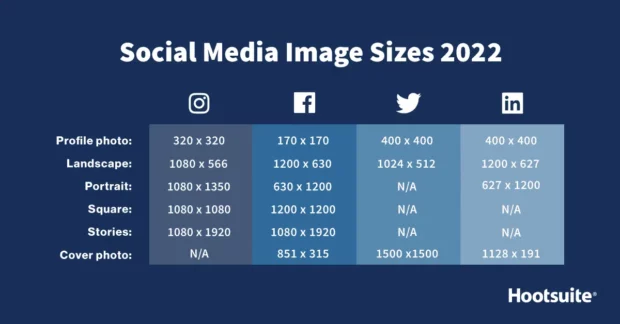19 Frequently Asked Social Media Questions [ANSWERED]
What do a family BBQ and a professional networking event have in common? The fact that someone is going to ask you, “How do I go viral?” or other social media questions, like, “Do you just post on Instagram all day?” #no
Most people know social media is great for business, but sometimes those at the top don’t always understand specifically how it works. Whether it’s the C suite you need to bring up to speed, a hiring manager, or your nosy aunt Meg, be prepared with these answers to the most popular social media questions.
Bonus: Get a free social media strategy template to quickly and easily plan your own strategy. Also use it to track results and present the plan to your boss, teammates, and clients.
19 frequently asked social media questions
1. What is a social media manager and what do they do?
A social media manager is someone who manages social media for a brand or multiple brands.
A social media manager’s responsibilities can span across social media marketing strategy, content creation, performance analysis, social listening, community management, and, sometimes, customer service.
Alongside their team, they social media managers also plan organic and paid campaigns, develop a content calendar, and network with other brands and influencer partners.
Sometimes social media managers are called digital marketing managers, community managers, or brand creators.
Large companies typically hire in-house social media staff, or rely on long-term agency contracts. Small businesses may only have the budget to hire one full-time person, resulting in them being a “jack-of-all-trades” social media manager. These versatile marketers often do everything from strategy to shooting videos and everything in between. Or, they may outsource to freelance experts in design, production, or writing to help out.
2. How much does social media marketing cost?
How much does a car cost? Depends if it’s a Kia or a Mercedes. The same goes for social media marketing: You can spend a lot or a little. But, the amount you spend isn’t a guarantee of how quickly you’ll reach your goals. After all, a Kia and a Mercedes can both get you to the same place at the time.
Running tons of ads or hiring an experienced agency to manage your accounts can result in faster growth. But, money can’t replace strategy. No matter how much you invest in social media marketing, you need to know your target audience, set measurable goals, create a content strategy, test different types of social media content, and more. You also need to understand social media ROI to know how much you can spend on promoting your products and services on social media and still make profit.
Even if you manage everything in-house, you still need to cover the expense of your time (or your team’s), plus:
- software/tools to produce and manage content,
- product or payment for influencer marketing campaigns,
- ads cost.
Not sure what you should be spending? We have a guide on how to create a social media budget for businesses of all sizes.
3. Is being a social media manager a real job?
Hopefully by now, most people realize working in social media is a real job. As of 2021, 91% of companies with over 100 employees use social media marketing.
The public expects most companies to have a social media presence, so the full-time jobs to manage those accounts are very real. Besides working directly for a company, social media managers can also work for agencies representing multiple clients, or freelance.
Content creators—who used to be called influencers—are also a form of social media managers, but they’re focused on building their own brands instead of a company’s. This used to be seen as a one-in-a-million shot at success but is becoming increasingly more common and financially viable as the creator economy continues to take off.
4. How do I get more followers, especially on a brand new account?
Consistently post high-quality, relevant content your target audience wants to see. Experiment often to discover which types of content work best.
But how do you do that? Sticking to a focused editorial calendar and regularly repurposing content.
In the meantime, if you can’t stand staring at “0 followers” at the beginning of a new account, and you have the budget for it, consider running ads to bring in your first couple hundred followers.
In previous years, cost-per-like campaigns were cheap, but skyrocketed to an average of $0.52 per like in 2021. In 2022 and beyond, you can get a better bang for your buck while still building a following with retargeting campaigns.
5. Is buying followers really that bad?
Yes. Don’t do it.
Need proof? We’ve run multiple experiments and the results are clear: Buying followers damages your reputation and can potentially lead to your account getting blacklisted. Some services are outright scams, while others deliver what they promise—thousands of followers—but those followers aren’t real, don’t comment or like, and they don’t do anything to increase the metrics that matter, like your engagement rate.
Want to spend money to boost your followers in a legit way? Congrats, that’s called advertising. Here’s how to get the most out of your social ad campaigns as a newbie.
6. How do you go viral?
One does not simply “go viral.”
The black gates leading to the social media elites are guarded by more than just a few viral posts. There is content there that does not sleep. The analytics are ever watchful. It is a bustling wasteland, riddled with Instagram Reels, selfies, and sponsorships. The air there is an intoxicating fume. Not with a ten thousand person camera crew could you do this.
As Boromir famously says in The Lord of the Rings: “It is folly.”
Perhaps Boromir would have felt differently about walking into Mordor if he would’ve had a guide such as this one on the best social media trends to go viral.
7. Which social media platforms should I use?
The only correct answer is, “Not all of them.” You can be successful with one social media channel, though keep it to a max of three or four main ones to focus on. (Unless you’ve got a big team to handle more than that—then by all means, go for gold.)
When choosing which social platforms to use, look for matches that:
- are where your audience hangs out
- have advertising or other promotional options
- align with the types of content you want to create
Whether you’re setting up new business accounts or auditing your performance, knowing which platforms to use relies on having up-to-date statistics on each platform. Lucky for you, we have our free, in-depth Social Trends 2022 report with all the demographics you need to decide where to focus your time this year.
8. How many people use social media?
As of Q1 2022, 4.62 billion people use social media, which is 58.4% of the world’s population. That’s also an 8% jump from 2021, when just over 50% of the world was on social.
9. What is the most popular social network?
Facebook with 2.9 billion monthly active users. Next up is YouTube with 2.5 billion monthly active users, then WhatsApp (2 billion) and Instagram (1.47 billion).
As the parent company of Facebook, Instagram, Facebook Messenger, and WhatsApp, Meta reaches 3.64 billion users per month. That’s 78% of the world’s 4.6 billion social media users.
Technical social media questions
10. How do you create a good social media strategy?
There isn’t a one-size-fits-all social media strategy. Your strategy is specific to your business. But one thing that is the same across every successful social media strategy? Making everything about serving your audience.
Brand new to developing a strategy, or looking to add something new to your toolbox? Check out the following resources:
- Free Social Media Strategy Template
- How to Set S.M.A.R.T. Social Media Goals
- Social Media Best Practices
Want full guidance on every aspect of creating and optimizing your social strategy? Try the Hootsuite Social Marketing course.
11. How do you calculate engagement rate?
Your engagement rate per post is the percentage of your followers who interacted with that post. Your overall engagement rate is the average engagement each post received during a specific time period.
To calculate it, take the total number of engagements on your post and divide it by your total follower count.
(Engagements / Total followers) x 100 = Engagement rate
Want a shortcut? Try our free engagement rate calculator, which includes benchmarks to measure your performance.
So what counts as an engagement?
- Like
- Comment
- Share
- Save (on Instagram)
For formats like Instagram Stories, engagement could also be a DM reply, clicking a link sticker, answering a poll, or other Story actions. Engagement options vary by platform but those are the ones most have in common.
12. How many hashtags should I use?
Each platform has its own rules about this. For example, Instagram allows a maximum of 30 hashtags per post.
But should you use them all? Nope.
While algorithms change all the time, our experiments show that using fewer hashtags can actually boost your reach by as much as 15%. Instagram now recommends using only 3-5 hashtags, even though they still allow up to 30.
What about Facebook, Twitter, and every other network? We’ve got you with a complete hashtag guide, including how to find the right ones for you.
13. How often should I post?
The “perfect” posting schedule changes as often as the platforms change their algorithms (which is a lot). What works right now likely won’t in six months.
You don’t need to alter your schedule every week, but you should be switching things up at least once a quarter to see if posting more or less often boosts your engagement. Your audience’s behavior—how often they’re online—and preferences will determine how successful your posting schedule is. It’s different for everyone.
Remember: your schedule needs to be something you can keep up with. Want to post five Reels a week but only have time to make one? Be realistic when planning.
OK, but how often should you really post right now? Here’s the answer:
14. What are the image sizes for each social platform?
Image specs have changed over the years as platforms redesign their apps and feeds. Check out our complete guide to all current social media image sizes for 2022.
Here’s a sneak peek of the most popular platforms and formats:
15. What social media tools do I need?
Technically, you don’t really need anything. You can manage your social media completely for free. But, having the following types of tools will dramatically improve your growth and save time and money.
Content scheduling
This is what most social media managers look to automate first, for obvious time-saving reasons. Beyond scheduling posts, your ride-or-die tool should also allow you to:
- Visually plan content and campaigns,
- Collaborate with your team,
- Optimize content for each platform (e.g. tagging the right @mentions, media size editing),
- Allow for bulk uploading and scheduling.
As you may have guessed, Hootsuite fills the bill on all those. Check out how Hootsuite brings planning and scheduling together to simplify your workflow:
Start your free trial. (You can cancel anytime.)
Content creation
If you don’t have a team supporting you, you’ll likely need help. A few of our faves are Canva for graphics and ContentGems for content curation. Plus, you can connect both to your Hootsuite account for max efficiency.
Social media analytics
Once you create and publish your content, you’re going to want to track how it performs to get an understanding of what your audience likes and dislikes. A good social media analytics tool (like Hootsuite!) will help you track the data that matters across multiple social media accounts and networks, and generate comprehensive reports for your team and boss.
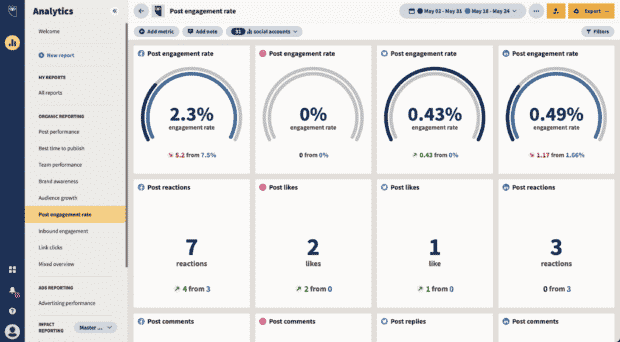
Start your free trial. (You can cancel anytime.)
Learn more about the different types of social media management tools and how to pick the best one for your needs.
Social media manager interview questions
Applying for social media manager positions? Check how your skills measure up, and grab our free resume template.
Already landed an interview? Prep for these social media interview questions:
16. As a social media manager, how do you balance work and life?
Being a social media manager often feels like a 24/7 responsibility, but thanks to technology, you don’t have to be “on” 24/7. Schedule content in advance, set aside specific times to respond to DMs and comments, and most importantly, use automation to help you enjoy your downtime worry-free.
Launch a chatbot to answer customer questions during off hours, and use an app like Smart Moderation to scan for spam or inappropriate comments while you’re away.
17. How do you respond to trolls?
How a company handles negative comments depends a lot on their content strategy, but as a rule: Everyone knows you don’t feed the trolls.
It’s a fine line between ensuring you’re addressing all legitimate customer complaints and filtering out trolls who only want to waste your time. When in doubt? Respond politely and professionally. It may not matter to the troll, but it will protect your reputation with your real customers who are watching.
18. Which social platforms do you have the strongest presence on and how did you grow them (for your work or personal use)?
Well, I can’t answer that for ya. But here’s where you want to wow your interviewer with case studies, percentages, and facts. Sure, you grew Al’s Window Emporium’s Instagram followers, but by how much? What percent increase was that year-over-year?
Facts = results, and results are what companies are hiring you for. Take the time to collect notable statistics from your career to demonstrate your capabilities.
19. We are just starting out and want to grow our following quickly. What do you suggest we do first?
Answer: relationship building for cross-promotion and/or running an influencer campaign. Have a budget? Run ads.
Networking with other complementary businesses is the fastest way to grow a new, unknown account for free. How you do this will vary, but the essential steps are:
- Identify potential partners (e.g. businesses in your industry/a related industry who aren’t competitors).
- Start slow: Follow them, leave thoughtful and professional comments on their posts. Do this for several weeks (if not longer!) before ever approaching them or asking to partner up.
- After you’ve built positive rapport with your comments, it’s time to slide into the DMs… or emails. Try to find an email contact. Use LinkedIn to search for the company’s social media or PR team, or check their website.
- Send a personalized introduction—starting with what a cross-promotion would do for them. Why should they want to partner with you? What’s in it for them? Approach everything with this mindset and you’ll be ahead of most.
- So, what is in it for them? Probably money. If your company is more established, a trade or other promotional opportunity may work instead.
- If you don’t hear back, follow up.
Let Hootsuite help you manage it all effortlessly with content planning and scheduling right alongside powerful analytics reporting. Plus all the advanced tools like social listening and ads management to take your growth to the next level. Try it free today.
Do it better with Hootsuite, the all-in-one social media toolkit. Stay on top of things, grow, and beat the competition.
Free 30-Day Trial (risk-free!)The post 19 Frequently Asked Social Media Questions [ANSWERED] appeared first on Social Media Marketing & Management Dashboard.
Categories
- 60% of the time… (1)
- A/B Testing (2)
- Ad placements (3)
- adops (4)
- adops vs sales (5)
- AdParlor 101 (43)
- adx (1)
- algorithm (1)
- Analysis (9)
- Apple (1)
- Audience (1)
- Augmented Reality (1)
- authenticity (1)
- Automation (1)
- Back to School (1)
- best practices (2)
- brand voice (1)
- branding (1)
- Build a Blog Community (12)
- Case Study (3)
- celebrate women (1)
- certification (1)
- Collections (1)
- Community (1)
- Conference News (1)
- conferences (1)
- content (1)
- content curation (1)
- content marketing (1)
- contests (1)
- Conversion Lift Test (1)
- Conversion testing (1)
- cost control (2)
- Creative (6)
- crisis (1)
- Curation (1)
- Custom Audience Targeting (4)
- Digital Advertising (2)
- Digital Marketing (6)
- DPA (1)
- Dynamic Ad Creative (1)
- dynamic product ads (1)
- E-Commerce (1)
- eCommerce (2)
- Ecosystem (1)
- email marketing (3)
- employee advocacy program (1)
- employee advocates (1)
- engineers (1)
- event marketing (1)
- event marketing strategy (1)
- events (1)
- Experiments (21)
- F8 (2)
- Facebook (64)
- Facebook Ad Split Testing (1)
- facebook ads (18)
- Facebook Ads How To (1)
- Facebook Advertising (30)
- Facebook Audience Network (1)
- Facebook Creative Platform Partners (1)
- facebook marketing (1)
- Facebook Marketing Partners (2)
- Facebook Optimizations (1)
- Facebook Posts (1)
- facebook stories (1)
- Facebook Updates (2)
- Facebook Video Ads (1)
- Facebook Watch (1)
- fbf (11)
- first impression takeover (5)
- fito (5)
- Fluent (1)
- Get Started With Wix Blog (1)
- Google (9)
- Google Ad Products (5)
- Google Analytics (1)
- Guest Post (1)
- Guides (32)
- Halloween (1)
- holiday marketing (1)
- Holiday Season Advertising (7)
- Holiday Shopping Season (4)
- Holiday Video Ads (1)
- holidays (4)
- Hootsuite How-To (3)
- Hootsuite Life (1)
- how to (5)
- How to get Instagram followers (1)
- How to get more Instagram followers (1)
- i don't understand a single thing he is or has been saying (1)
- if you need any proof that we're all just making it up (2)
- Incrementality (1)
- influencer marketing (1)
- Infographic (1)
- Instagram (39)
- Instagram Ads (11)
- Instagram advertising (8)
- Instagram best practices (1)
- Instagram followers (1)
- Instagram Partner (1)
- Instagram Stories (2)
- Instagram tips (1)
- Instagram Video Ads (2)
- invite (1)
- Landing Page (1)
- link shorteners (1)
- LinkedIn (22)
- LinkedIn Ads (2)
- LinkedIn Advertising (2)
- LinkedIn Stats (1)
- LinkedIn Targeting (5)
- Linkedin Usage (1)
- List (1)
- listening (2)
- Lists (3)
- Livestreaming (1)
- look no further than the new yorker store (2)
- lunch (1)
- Mac (1)
- macOS (1)
- Marketing to Millennials (2)
- mental health (1)
- metaverse (1)
- Mobile App Marketing (3)
- Monetizing Pinterest (2)
- Monetizing Social Media (2)
- Monthly Updates (10)
- Mothers Day (1)
- movies for social media managers (1)
- new releases (11)
- News (72)
- News & Events (13)
- no one knows what they're doing (2)
- OnlineShopping (2)
- or ari paparo (1)
- owly shortener (1)
- Paid Media (2)
- People-Based Marketing (3)
- performance marketing (5)
- Pinterest (34)
- Pinterest Ads (11)
- Pinterest Advertising (8)
- Pinterest how to (1)
- Pinterest Tag helper (5)
- Pinterest Targeting (6)
- platform health (1)
- Platform Updates (8)
- Press Release (2)
- product catalog (1)
- Productivity (10)
- Programmatic (3)
- quick work (1)
- Reddit (3)
- Reporting (1)
- Resources (34)
- ROI (1)
- rules (1)
- Seamless shopping (1)
- share of voice (1)
- Shoppable ads (4)
- Skills (28)
- SMB (1)
- SnapChat (28)
- SnapChat Ads (8)
- SnapChat Advertising (5)
- Social (169)
- social ads (1)
- Social Advertising (14)
- social customer service (1)
- Social Fresh Tips (1)
- Social Media (5)
- social media automation (1)
- social media content calendar (1)
- social media for events (1)
- social media management (2)
- Social Media Marketing (49)
- social media monitoring (1)
- Social Media News (4)
- social media statistics (1)
- social media tracking in google analytics (1)
- social media tutorial (2)
- Social Toolkit Podcast (1)
- Social Video (5)
- stories (1)
- Strategy (608)
- terms (1)
- Testing (2)
- there are times ive found myself talking to ari and even though none of the words he is using are new to me (1)
- they've done studies (1)
- this is also true of anytime i have to talk to developers (1)
- tiktok (8)
- tools (1)
- Topics & Trends (3)
- Trend (12)
- Twitter (15)
- Twitter Ads (5)
- Twitter Advertising (4)
- Uncategorised (9)
- Uncategorized (13)
- url shortener (1)
- url shorteners (1)
- vendor (2)
- video (10)
- Video Ads (7)
- Video Advertising (8)
- virtual conference (1)
- we're all just throwing mountains of shit at the wall and hoping the parts that stick don't smell too bad (2)
- web3 (1)
- where you can buy a baby onesie of a dog asking god for his testicles on it (2)
- yes i understand VAST and VPAID (1)
- yes that's the extent of the things i understand (1)
- YouTube (13)
- YouTube Ads (4)
- YouTube Advertising (9)
- YouTube Video Advertising (5)

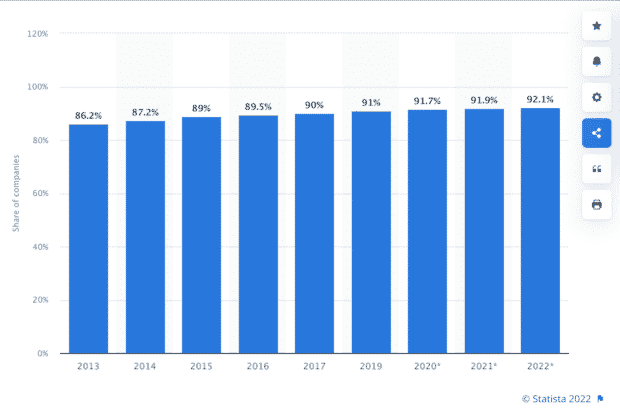
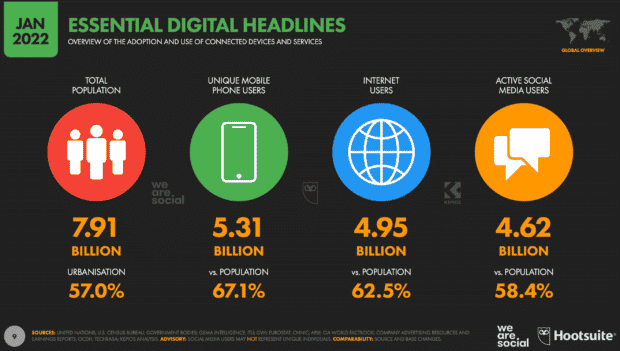
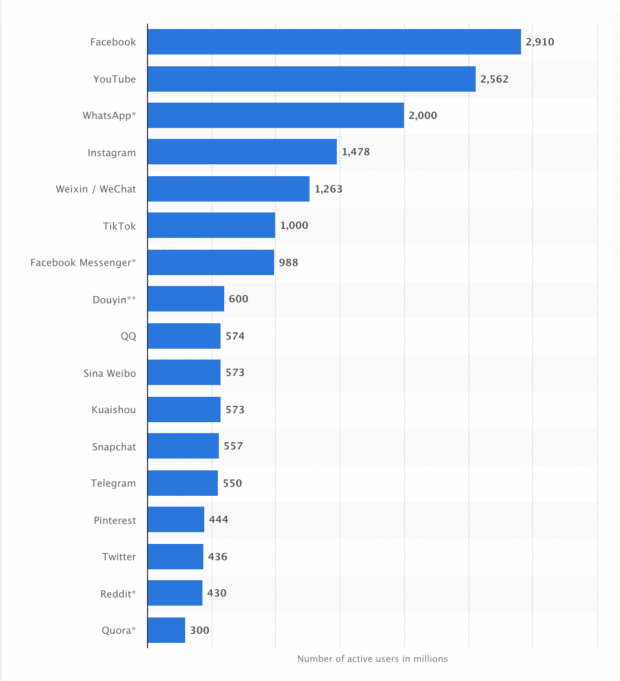
 (@hootsuite)
(@hootsuite)